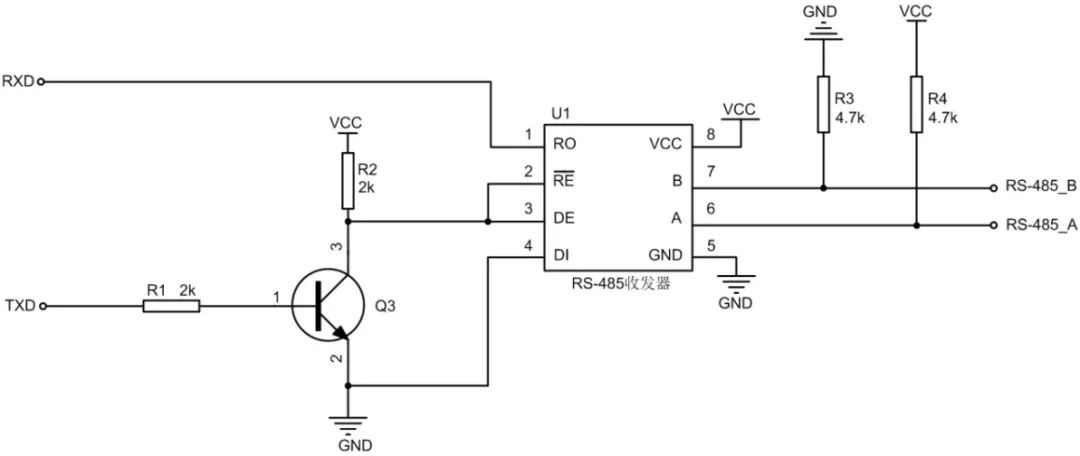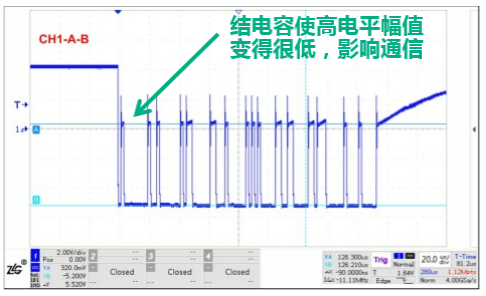Follow+Star Public Account, don’t miss exciting content
Source | ZLG Zhiyuan Electronics
RS-485 bus has advantages such as simple structure, long communication distance, high communication speed, and low cost, widely used in industrial communication, power monitoring, and instrumentation industries.
Generally, RS-485 transceivers have two pins to control the data transmission direction. What common problems may arise if peripheral circuits are designed to make them operate in an automatic transceiving state?
Principle of RS-485 Automatic Transceiving
Among various communication methods, RS-485 bus is quite common due to its simple interface and easy networking, widely used in industrial control, instruments, multimedia networks, and mechatronic products.
MCU communication generally uses TTL levels. If an external device uses 485 levels, the two cannot be directly connected for communication and must use a 485 transceiver for level conversion. Since 485 communication is half-duplex, meaning data cannot be sent and received simultaneously, 485 transceivers usually have pins to control the transmission direction.
Next, let’s take a look at the peripheral circuit design for automatic transceiving of 485 transceivers.
From the schematic, it can be seen that automatic transceiving is mainly achieved through an NPN transistor switch circuit. What is the specific data transmission and reception process?
● When Sending Data
When sending data, the TX pin of the MCU is used. Assuming we want to send the data 0x55, it converts to binary as 0b01010101, which is reflected as a high and low level switching on the TX pin. When the TX pin is 0, the transistor does not conduct, DE is high, entering send mode. Since the DI pin is grounded, the differential level logic between A and B is 0 at this time; when the TX pin is 1, the transistor conducts, RE is low, entering receive mode. At this time, the A and B pins of the transceiver enter high impedance state, and due to the pull-up resistor R4 and pull-down resistor R3, the differential level logic between A and B is 1.
This ensures that whatever level the TX pin outputs, the differential level logic between A and B remains consistent.
When receiving data, the RX pin of the MCU is used. During the data reception process, the TX pin remains high, the transistor conducts, RE is low, entering receive mode, and the RX pin will receive the data transmitted from A and B.
Common Issues with Automatic 485 Circuits
1. Slow Communication Speed
The turn-on delay of the transistor is in the ns range, and the turn-off delay is in the us range, which will cause a longer delay time for sending low levels in the transceiver circuit.
Additionally, sending high levels is driven by external pull-up and pull-down resistors; the larger the resistance, the slower the rising edge.
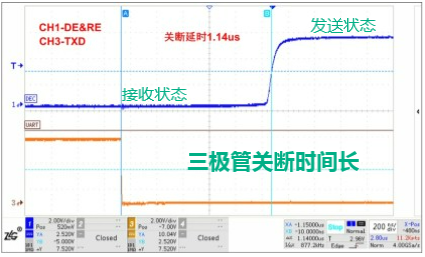
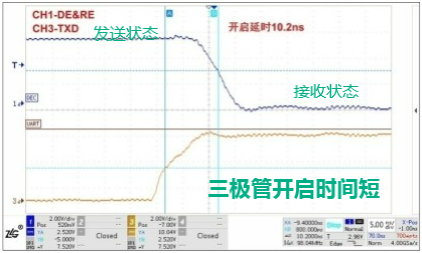
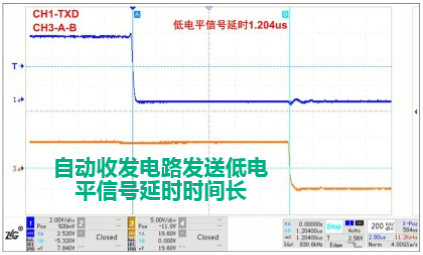
2. Communication Risks at High Baud Rates
Assuming the bit being sent on the TX pin is 0, and the next bit to be sent is 1, due to the high level being driven by external pull-up and pull-down resistors, the transceiver will switch to receive state. At this time, the AB line switches from low to high level, which takes several hundred ns, and the RX pin will receive 0 during this time. If the baud rate is too high, the RX pin receiving the low level will be mistakenly regarded as the start bit of reception, leading to communication anomalies.
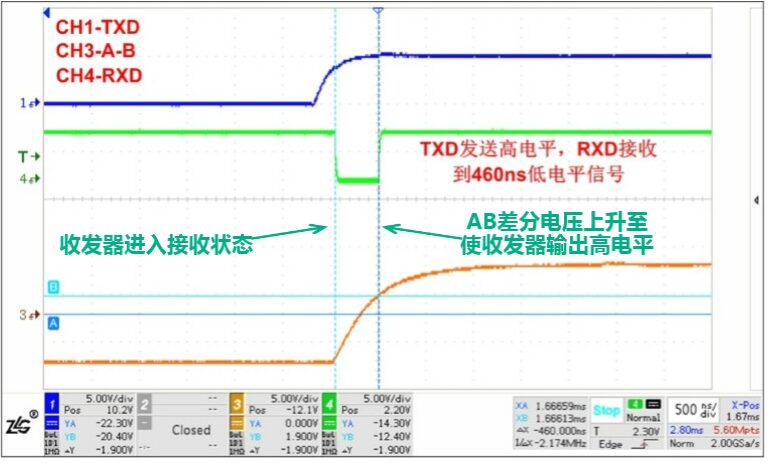
3. Junction Capacitance of Peripheral Circuits Affects Transceiver Communication Stability
The high level is driven by external pull-up and pull-down resistors, and the high level output is slow. If the junction capacitance of the external protection circuit is too high, it will lead to a low amplitude of the differential voltage between A and B. When the amplitude is below the threshold level, it will cause communication anomalies.
● Column “Embedded Tools”
● Column “Embedded Development”
● Selected Tutorials from the Embedded Column
Follow the public account reply “Join Group” to join the technical exchange group according to the rules, reply “1024” to see more content.
Click “Read Original” for more shares.

